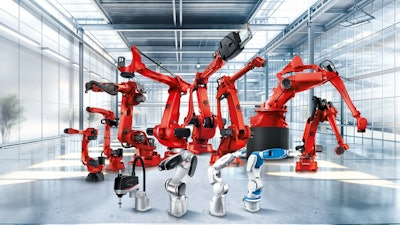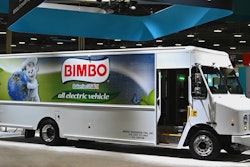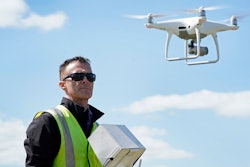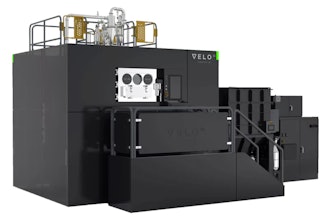
An interview with Stefania Ferrero, chief marketing officer at Comau, a multinational company based in Italy and a subsidiary of Stellantis.
Q: Comau's classic strength is the "automotive industry." How does this impact the company's current direction?
 Stefania Ferrero, chief marketing officer at Comau.Comau
Stefania Ferrero, chief marketing officer at Comau.Comau
Keep in mind that the traditional automotive market, which includes retooling and after-sales services, still represents a key part of our business. What has changed, in terms of Comau's strategic direction, is that we are now focusing also on high-growth industries around the world that are new to automation or whose dynamic environments necessitate advanced automation solutions. e-Mobility is a concrete example and represents a market in which Comau has already established a strong presence at a global level, with a portfolio of projects and customers that is increasingly growing. Out of the EV sector, it's worth mentioning hydrogen, logistics, shipbuilding, and renewable energies, among others.
Q: What do you see happening in the world of industrial automation?
Ferrero: We are seeing an increasing need to automate applications that require a much higher level of flexibility and versatility compared to that of a typical automotive plant. In addition, many of the markets we are now working with have less experience in automation. The scenario is further complicated by a worldwide shortage of skilled workers in the manufacturing field and continuous changes of economic and geo-political scenarios. All this means that our solutions need to be increasingly easy and flexible to deploy, program and use.
It's important to note that the need for industrial automation continues to grow at constant rates. Market research indicates a projected CAGR of up to 14% from 2024 to 2030, which is confirmed by our experience with customers all around the world. The pace of change is also accelerating in fast-growing non-automotive markets with some, such as renewable and green energy expected to reach a 5-year CAGR (2024 – 2030) of up to 40%.
Yet, when compared to the high-volume, hardware-driven automotive industry, many of the companies that are now looking to harness the power of automation have smaller footprints and/or particular working environments. Food and pharmaceutical industries typically demand a sensitive environment and automation solutions without any external contaminants. Automating warehousing and logistics operations, on the other hand, is dynamic and often requires collaborative robotics that can safely work alongside humans. We are also being asked to provide automation for various unstructured environments. Renewable energy, shipbuilding and construction are examples of this.
Independent of the environment, industrial automation is increasingly characterized by highly variable and/or intricate process sequences. What we're doing, therefore, is leveraging our core competencies in manufacturing automation, material handling, robotics, assembly and AI-backed systems to solve complex problems and automate highly variable, often manual tasks, that require intelligent and next generation robotics.
Q: Please explain the factors driving the increased demand for automation.
Ferrero: Regardless of the industry or the size of the company, automation grants multiple benefits beyond increasing productivity and efficiency and lowering overall costs. The repeatability and process standardization that come with automation translates to better quality, enhanced safety and greater customer satisfaction. To cite a few real-world results, we have helped ensure a 90% equipment availability rate for a large e-Mobility customer and a 70% reduction in costs through logistics automation for another customer. Our wearable robotics have helped produce a 68% reduction in muscle overload during logistics operations, which translates to increased sustainability in operations and worker wellbeing.
Many of today's automation solutions are modular and scalable, allowing companies to protect their investment as their business grows. There's also a clear link between automation and innovation. For example, one of our mobile robotic solutions delivers greater scalability and 3x faster welding operations in an unstructured, outdoor environment. Increased scalability is another benefit, as companies can handle higher volumes of work by replicating solutions after the initial deployment.
Another important factor is a clear shift from the low mix and high volumes that are common within large-scale manufacturing to low volumes, a high product mix, and a large degree of process variability. Until recently, niche production scenarios relied on manual manufacturing methods because traditional automation was not flexible enough to manage all the variables. Now, as we continue to advance robotics through the use of software, artificial intelligence, and other enablers, automation is a viable option for niche manufacturing scenarios. Our ultimate aim is to expand the adoption of robotics in all markets where a robot can make a task safer, less demanding for people, more sustainable, and more productive.
Q: Are there any important trends that we should be aware of?
Ferrero: As automation evolves, so must the approach to robotics. I've already mentioned that we see an increasing need for robots that can adapt to handling low volumes with high variability. This necessitates a paradigm shift from hardware-driven to software-driven solutions. Thanks to our innovation team and their use of machine learning algorithms and neural networks, Comau's robots are increasingly capable of adapting in real-time to changes in their work environment, enhancing their ability to perform complex tasks and interact safely with humans. Software-driven automation also allows companies new to automation to optimize their applications in a straightforward and intuitive manner. This shift helps close the skills gap by making robotics more user-friendly.
There is also a growing trend in the use of collaborative robots (cobots) and wearable robotics (exoskeletons), both of which boost productivity while ensuring worker safety and wellbeing. Furthermore, we see an increasing role for system integrators and machine builders who can design and create novel solutions for various application sectors.
Q: What about the new S-Family of robots recently unveiled at Automate 2024?
Ferrero: Comau's new S-Family consists of two compact, robust and versatile robots specifically designed for high-speed applications where accuracy and repeatability are non-negotiable. Featuring payloads of 13 kg and 18 kg, respectively and a protective water and dust-resistant IP68 hollow-wrist design, these 6-axis articulated robots are perfect for a wide range of arc welding, handling, food & beverage and general assembly applications, in addition to foundry, automotive, and battery manufacturing processes. They also offer improved access to small spaces, protected cables to avoid damage and reduce the risk of contamination in sensitive environments, integrated arc and gigabit dressings and multiple mounting positions to save space without sacrificing performance.
Q: What else did Comau present at the Automate 2024 show?
Ferrero: We also presented the newest solution within our hardware-agnostic Machine Inspection Recognition Archetypes (MI.RA) family, MI.RA/OnePicker. Designed to automate the product sorting and piece-picking operations characterized by a high variability of parts and products, MI.RA/OnePicker delivers versatile, intelligent automation that can respond to non-linear tasks. Because it can autonomously and automatically piece-picks random, heterogeneous and complex objects from an unstructured environment while ensuring collision-free trajectories, it allows companies to reduce repetitive manual tasks, streamline processes and increase overall productivity.
One of the underlying messages that we presented was Comau's commitment to reducing barriers to automation for companies in virtually every industry. We work closely with several partners, such as Rockwell Automation, to allow customers to easily program Comau's articulated robots via the control platforms they are already using. The seamless integration of our articulated robots with the Unified Robot Control (URC) Solution from Rockwell Automation is a perfect example. As an Industry and Innovation Partner with Intrinsic, an Alphabet company and Google moonshot, we are working to make robotics more accessible through powerful software-driven innovation.
Another way Comau is closing the skills gap is through its patented e.DO™ educational robot, which is a key part of the company's educational offering. In addition to basic robot programming, the e.DO™ robot can be used for advanced skills training. When combined with Seabery Soldamatic technology, the highly calibrated and parameterized system creates the most realistic welding training experience aside from actual welding.
Q: How is Comau responding to its customers' evolving automation needs?
Ferrero: Comau has a strong track record of delivering concrete and advanced solutions, which are backed by our longstanding expertise in products, processes and technologies. This is aided by the fact that our global presence is complemented by local teams and competence centers, in addition to a strong network of systems integrators and technology partners. Thanks to this consolidated multi-country collaboration on all levels, we are increasingly able to offer innovative solutions to solve compelling problems in traditional, diversified and emerging industries.
Standardized solutions and cost-efficiency are other key aspects that drive Comau's value proposition. The bottom line is that Comau has more than 50 years of experience in automotive, which is one of the most complex realities in terms of processes, cycle times, flexibility requirements, and technology rates. We are now leveraging this to meet the growing demand for sustainable automation, particularly in emerging sectors that have previously lacked automation. Comau is also investing heavily in cognitive robotics, intelligent vision systems, intelligent software platforms, and digitalization.
Q: Can you give us more details about the high-growth markets Comau works with?
Ferrero: Most of the key markets we address are experiencing double-digit growth rates: electric vehicles (EVs) both within and outside the automotive industry, hydrogen (including the assembly and production of components for fuel cells and electrolyzers), warehousing and unstructured environments such as shipbuilding, to name just a few.
Looking at a few of these markets in more detail, there is little doubt that hydrogen is a key area where Comau's expertise can help increase the hydrogen production capacity. I'm referring to making the production process for fuel cells and electrolyzers more efficient and scalable while lowering the price point. To do this, Comau is working to industrialize production thanks to a proprietary portfolio of solutions capable of automating key production steps, including cell preparation, stacking, compression, welding, leak testing and more. This will enable energy suppliers to scale up production volumes while increasing the quality of their high-precision processes.
For the solar industry we have developed a new paradigm in solar blade installation: Hyperflex. The first-of-its-kind mobile factory facilitates faster construction of photovoltaic systems, contributing to a 25 percent time-to-market savings on new installations. This figure is very important considering the fact that reducing the cost of installing a solar farm is of paramount importance and a key factor in achieving emission reduction targets. By expediting the implementation of new installations while ensuring better quality, higher efficiency, and lower overall costs, Hyperflex can help our customers make sustainable solar energy a reality.
Q: And what about Comau's future plans?
Ferrero: Comau intends to build on its technological foundations and long-term customer relationships to expand our core markets while exploiting the strong, double-digit growth projections for industrial automation. This includes investing in high-growth markets and strengthening our portfolio of advanced automation and robotics technologies and solutions.
In the next few years, we intend to complete the transition from traditional robotics to delivering disruptive software-driven automation, and we will strengthen our portfolio of solutions and services across a global and highly diversified customer base.
In the meantime, we will continue creating paradigm shifts in the industry with projects such as the one with Fincantieri, an Italian leader in the shipbuilding industry. Through a joint project, we have designed and developed the MR4Weld mobile robot, the first-of-its-kind robotic mobile welding system for ships. Our patented Hyperflex solution mentioned earlier is another example of an industry-first. It's an all-in-one mobile factory that automatically installs solar blades directly in the photovoltaic field – at a rate of up to 30% more modules per hour per operator compared to standard processes.
Furthermore, we remain dedicated to professional development and upskilling. Comau will continue to deliver robust training initiatives to professionals, young talents, and students through Comau Academy. This is part of our commitment to anticipating future training needs and developing innovative and engaging educational projects. These programs, which include targeted, hands-on training, are designed to address the demand for skilled professionals and manual labor, accelerating the transition to advanced manufacturing for companies of all sizes.























